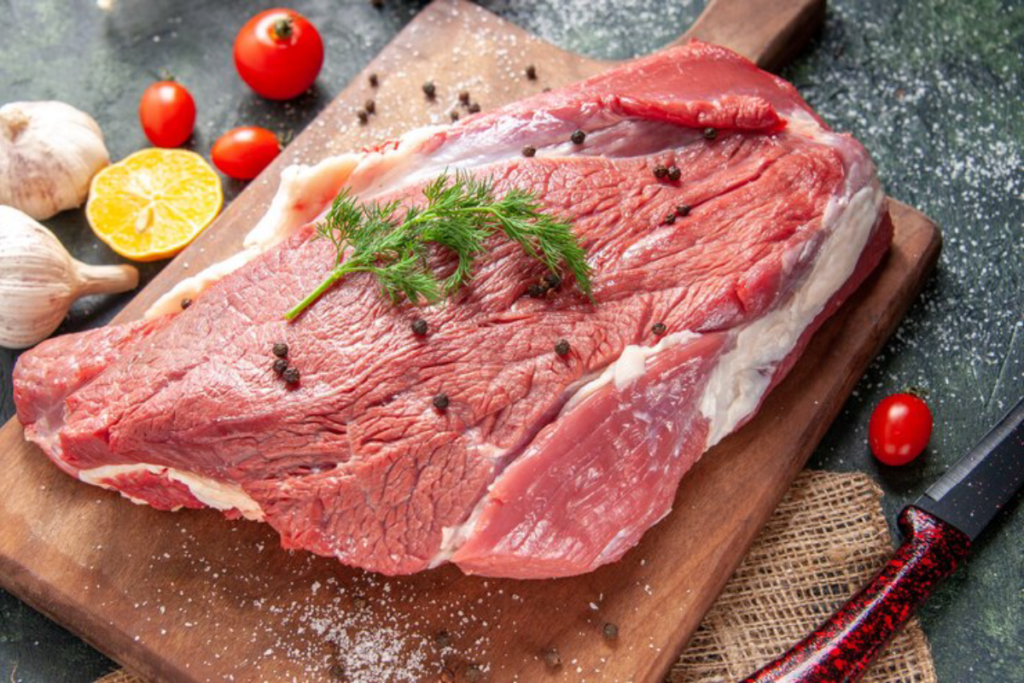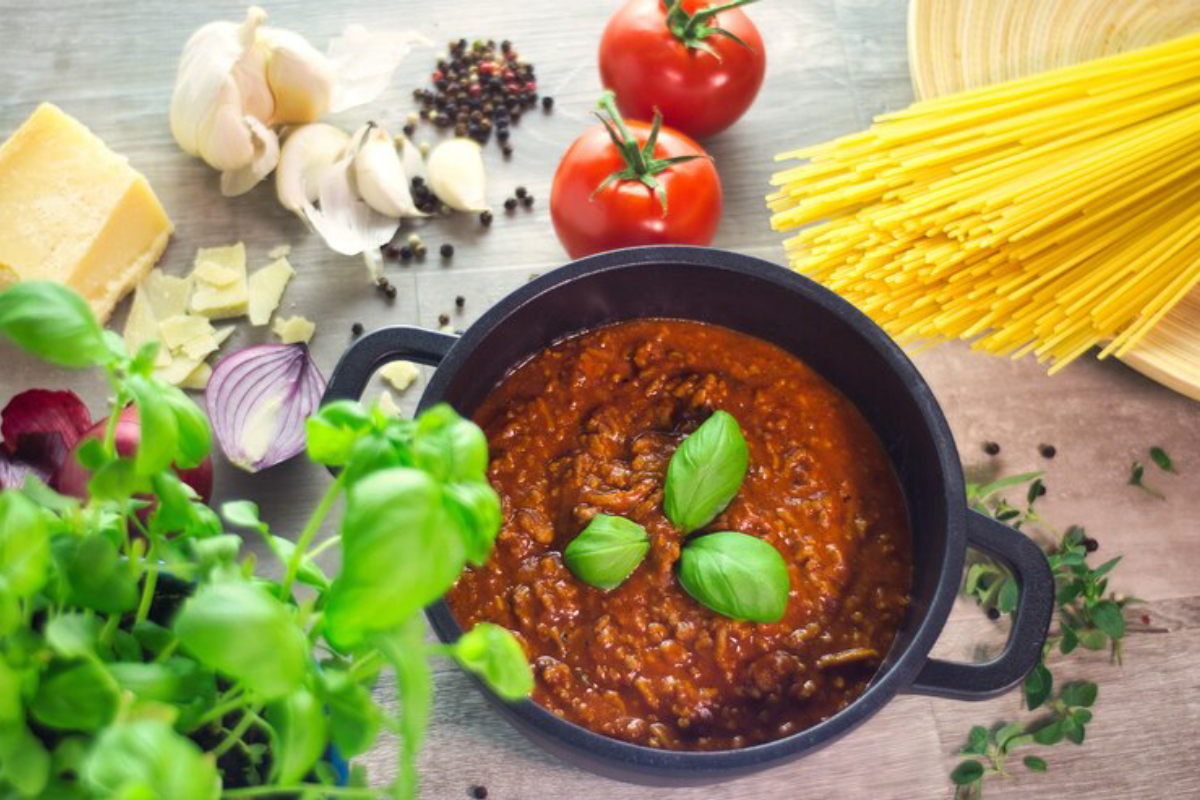There’s something magical about a perfectly cooked ragù that makes you crave it over and over again. The rich, savory flavors combined with a silky texture create the ultimate Italian comfort food. But what makes ragù taste better? How do you go from a basic tomato-meat sauce to a rich, flavorful masterpiece that’s packed with depth?
In this article, we’ll explore everything that can improve your ragù, from selecting the right ingredients to mastering slow cooking techniques. If you’ve ever wondered how to make your ragù stand out, you’re about to discover the secrets that Italian grandmothers have been keeping for generations.
The Importance of Quality Meat
When it comes to what makes ragù taste better, the quality and type of meat you use play a huge role. While tomatoes and herbs are essential, the meat is the heart of the sauce. So, let’s start with the foundation.

Beef, Pork, or a Blend?
Ragù is traditionally made with meat, and the most common options are beef or pork. However, blending meats, such as combining beef with pork or veal, can make the flavor more complex. Beef provides a rich, hearty base, while pork adds a slightly sweet and fatty depth. Veal, on the other hand, brings a tender, mild flavor.
Many Italian families use a mix of all three meats to get a ragù with the perfect balance of fat, flavor, and texture. This blend ensures that your sauce will be rich, savory, and irresistible.
Browning the Meat: Why It’s Crucial
Browning your meat properly is one of the essential answers to what makes ragù taste better. When you brown the meat before adding it to the sauce, you’re allowing it to develop rich, deep flavors through caramelization.
To do this, heat oil in a pan until it’s hot, then add the meat in batches. Avoid crowding the pan, as this will steam the meat instead of browning it. Sear the meat until it turns a deep golden brown, and only then should you combine it with the rest of the ingredients. This step ensures that your ragù is layered with flavor right from the start.
The Role of Aromatics: Building a Flavorful Base
Aromatic vegetables are the backbone of any great sauce, and ragù is no different. These veggies don’t just add flavor—they help develop the sauce’s complexity.
The Holy Trinity: Onions, Carrots, and Celery
The classic combination of onions, carrots, and celery forms the foundation of most Italian sauces, including ragù. Known as soffritto in Italian cooking, this trio brings a balance of sweetness, earthiness, and mild bitterness.
- Onions: Provide sweetness and a mild sharpness.
- Carrots: Add a natural sweetness that complements the acidity of the tomatoes.
- Celery: Gives the sauce a slight bitterness that balances out the richness of the meat.
Sauté these vegetables in olive oil until they are soft and golden, allowing their flavors to release fully. This is a crucial step in developing the sauce’s depth. The slow cooking of these veggies helps draw out their natural sugars, making the sauce more harmonious and well-rounded.
Garlic: The Bold Flavor Enhancer
Adding garlic to the soffritto is another way to answer the question what makes ragù taste better. Garlic provides a sharp, savory note that brightens the sauce. For the best results, add minced garlic to the pan once the onions, carrots, and celery have softened, and cook it until fragrant.
However, be careful not to burn the garlic, as it can turn bitter. Garlic should be cooked just long enough to release its aroma and merge with the other flavors in the sauce.
Tomatoes: The Core Ingredient
While meat is central to ragù, tomatoes are just as important. But not all tomatoes are created equal, and selecting the right type is key to what makes ragù taste better.
Canned or Fresh Tomatoes?
For most ragù recipes, canned tomatoes are preferred. Why? They’re more consistent in flavor and texture than fresh tomatoes, especially out of season. San Marzano tomatoes, in particular, are often recommended due to their sweet flavor and low acidity.
If you want to elevate your ragù, opt for whole peeled tomatoes or crushed tomatoes. Avoid using diced tomatoes, as they often contain additives that prevent them from breaking down properly, resulting in a chunkier sauce.
Tomato Paste: The Flavor Booster
Adding a small amount of tomato paste to your ragù can significantly deepen its flavor. Tomato paste is highly concentrated and adds a rich, umami-packed punch to the sauce. When you’re sautéing the aromatics, stir in a tablespoon of tomato paste and let it cook for a minute or two. This step caramelizes the paste and enhances the sauce’s overall depth.
The Magic of Wine: Adding Depth and Acidity
Wine is another crucial element in answering what makes ragù taste better. It adds acidity and complexity, helping balance the sweetness of the tomatoes and richness of the meat.
Red or White Wine?
Red wine is typically used in meat ragù, as it provides a robust, full-bodied flavor. Wines like Chianti or Sangiovese work well because they have enough acidity to cut through the richness of the meat.
On the other hand, white wine can also be used, especially if you’re making a lighter ragù. It brightens the sauce and gives it a slightly more delicate flavor. Whichever wine you choose, make sure to let it simmer and reduce after adding it. This process burns off the alcohol while concentrating the flavor, leaving behind the perfect balance of acidity and richness.
Slow Cooking: The Key to Intensity
If you’ve ever wondered what makes ragù taste better, slow cooking is one of the biggest secrets. Ragù needs time to develop its rich, complex flavors, and rushing this process will result in a flat-tasting sauce.
Low and Slow: Why It Matters
Simmering your ragù over low heat for several hours allows all the ingredients to meld together. The meat becomes tender, the tomatoes break down into a smooth sauce, and the flavors from the aromatics and wine intensify. Ideally, you should cook ragù for at least two to three hours, but some traditional recipes recommend simmering it for as long as four or five hours.
This slow cooking process extracts every bit of flavor from each ingredient, turning a simple meat-and-tomato sauce into something extraordinary.
Adding Stock for Extra Richness
For an even more flavorful ragù, consider adding stock during the slow cooking process. Beef stock is a popular choice, as it adds richness and depth to the sauce. You can also use chicken stock if you want a lighter result. The stock should be added gradually, allowing it to reduce as the sauce simmers. This method prevents the sauce from becoming too watery while enhancing its savory profile.
Herbs and Spices: The Finishing Touches
Herbs and spices play a vital role in determining what makes ragù taste better. They enhance the sauce’s overall flavor and aroma, adding a final layer of complexity.
Fresh Herbs: Basil and Rosemary
Fresh basil and rosemary are commonly used in ragù to provide brightness and earthiness. Basil adds a sweet, peppery note, while rosemary offers a piney, woodsy flavor that pairs perfectly with meat.
- Basil: Often added at the end of cooking to maintain its fresh flavor.
- Rosemary: Typically added earlier so its robust flavor can infuse into the sauce.
Dried Oregano and Bay Leaves
Oregano and bay leaves are also staples in many ragù recipes. Oregano has a strong, slightly bitter taste that balances the sweetness of the tomatoes, while bay leaves add a subtle herbal flavor that deepens the sauce.
- Oregano: Adds an earthy bitterness that works well with tomatoes.
- Bay Leaves: Add depth and aroma; just remember to remove them before serving.
Balancing Acidity and Sweetness
One of the keys to what makes ragù taste better is achieving the perfect balance between acidity and sweetness. Tomatoes are naturally acidic, and while this acidity is important for flavor, it can sometimes overpower the dish.
A Pinch of Sugar
To counteract the acidity of the tomatoes, you can add a pinch of sugar to your ragù. The sugar doesn’t make the sauce sweet; instead, it balances the tartness of the tomatoes, creating a smoother, more harmonious flavor.
A Splash of Balsamic Vinegar
If your ragù lacks acidity, a small splash of balsamic vinegar or red wine vinegar can brighten the sauce and add depth. Vinegar helps balance the richness of the meat and cuts through the heaviness of the sauce, making it more dynamic.
Letting the Flavors Meld: Why Resting Time Matters
One often overlooked tip for what makes ragù taste better is letting the sauce rest after cooking. Once your ragù has finished simmering, remove it from the heat and let it sit for 10 to 15 minutes. This resting time allows the flavors to meld together, intensifying the sauce’s overall taste.
Make It Ahead of Time
If you have the time, making ragù a day in advance is one of the best ways to improve its flavor. As the sauce sits in the fridge overnight, the flavors continue to develop, resulting in an even richer and more cohesive sauce. Simply reheat it gently on the stove before serving, and you’ll notice a big difference in taste.
Pairing Ragù with the Perfect Pasta
No discussion of what makes ragù taste better would be complete without mentioning the pasta. The right pasta can elevate your ragù, ensuring that every bite is perfectly coated with sauce.
Pappardelle: The Traditional Choice
Pappardelle is a wide, flat pasta that’s perfect for thick, meaty ragù. Its large surface area allows it to hold onto plenty of sauce, making every bite rich and satisfying.
Tagliatelle and Fettuccine
If you don’t have pappardelle, tagliatelle and fettuccine are excellent alternatives. These slightly narrower flat pastas work well with ragù because they also hold onto the sauce beautifully.
Rigatoni: For a Heartier Bite
Rigatoni is another great option for ragù. Its ridged, tubular shape is perfect for trapping the sauce inside, ensuring that every bite is full of flavor.
FAQ: What Makes Ragù Taste Better?
What is the best meat blend for ragù?
A mix of beef, pork, and veal offers a rich, complex flavor. Beef adds heartiness, pork provides fat and sweetness, and veal adds tenderness.
How long should ragù cook?
Ideally, ragù should simmer for at least 2 to 3 hours. Slow cooking allows the flavors to meld and develop, resulting in a richer sauce.
What kind of wine should I use in ragù?
Red wine, such as Chianti or Sangiovese, is the traditional choice for ragù. White wine can also be used for a lighter flavor.
Why add sugar to ragù?
A small pinch of sugar balances the acidity of the tomatoes, creating a more harmonious and smoother sauce.
Can I make ragù ahead of time?
Yes! In fact, ragù often tastes better the next day, as the flavors have had more time to meld together.
Conclusion
So, what makes ragù taste better? It’s a combination of carefully selected ingredients, slow cooking, and balancing flavors. From browning the meat to simmering the sauce for hours, every step contributes to the depth and richness that define a perfect ragù. With the right techniques and a little patience, you can transform a simple tomato-meat sauce into an unforgettable dish that’s full of bold, complex flavors.
Now that you’ve learned the secrets to improving your ragù, it’s time to head to the kitchen and start cooking! Whether you’re making a classic beef ragù or experimenting with different meats and herbs, these tips will help you create a sauce that’s sure to impress.
